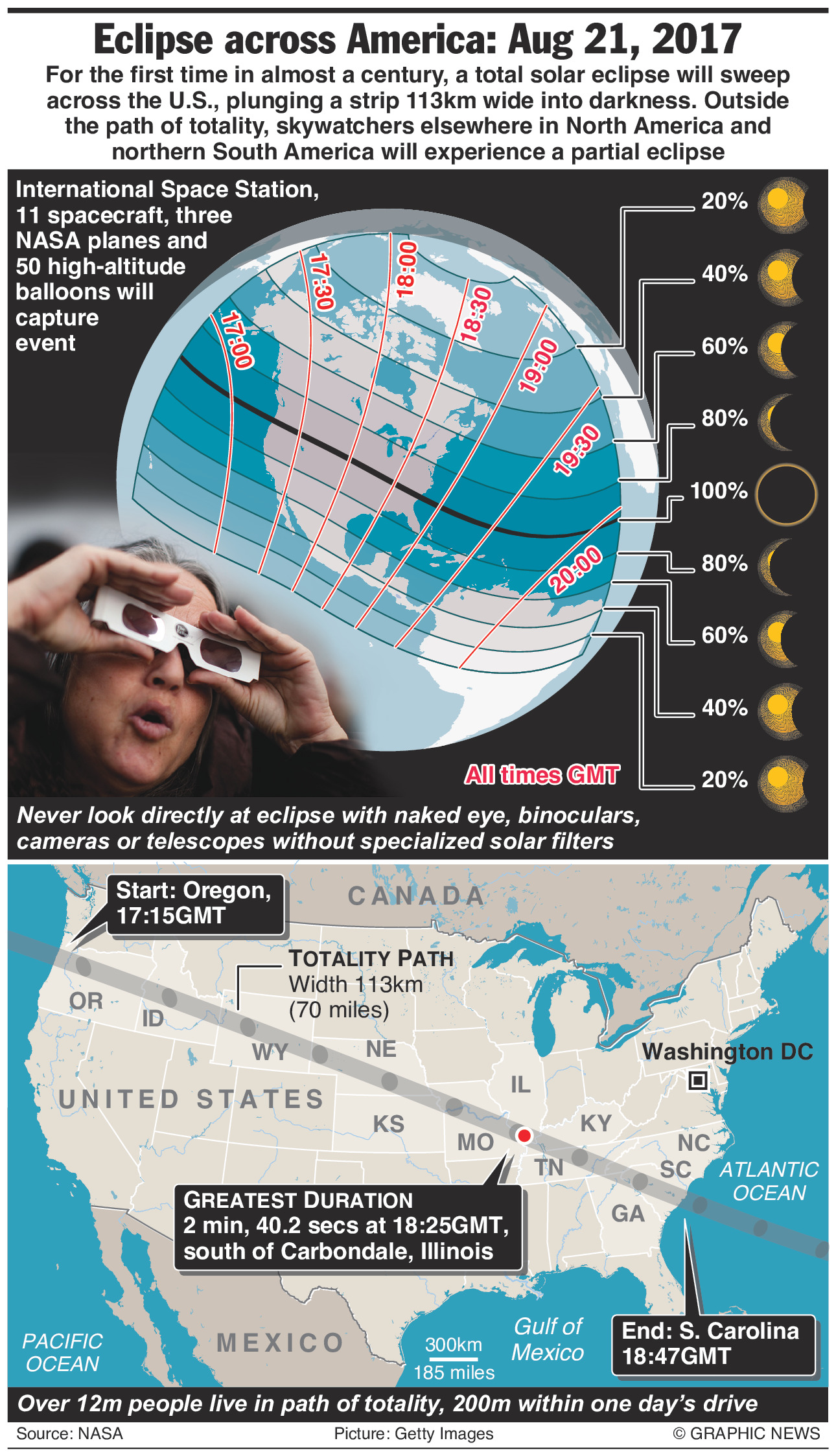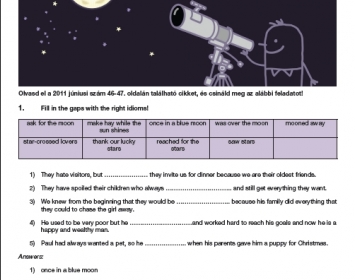A dal után jöjjön most egy olvasmány is a napfogyatkozásról! Élőben is nézhetitek interneten ezt az igazán ritka jelenséget!
On Monday, August 21, 2017, a total solar eclipse, frequently referred to as the “Great American Eclipse”, is visible across the entire United States passing from the Pacific to the Atlantic coast. In other countries it will only be visible as a partial eclipse. Anyone within the path of totality can see one of nature’s most awe-inspiring sights – a total solar eclipse.
A solar eclipse occurs when the Moon passes between Earth and the Sun, thereby totally or partly obscuring the image of the sun for a viewer on Earth. A total solar eclipse occurs when the moon’s apparent diameter is larger than the sun’s, blocking all direct sunlight, turning day into darkness. Totality occurs in a narrow path across Earth’s surface, with the partial solar eclipse visible over a surrounding region thousands of kilometers wide.

The last time a total solar eclipse was visible across the entire United States was during the June 8, 1918 eclipse, and not since the February 1979 eclipse has a total eclipse been visible from anywhere in the mainland United States. The path of totality will touch 14 states, although a partial eclipse will be visible in all fifty states. The total area of the path of totality will be about 16% of the area of the United States, although most of this area is over the ocean and not actually over the United States. The event’s shadow began to cover land on the Oregon coast as a partial eclipse at 4:06 p.m. UTC (9:06 a.m. PDT) on August 21, and its land coverage will end later as a partial eclipse along the South Carolina coast at about 6:44 p.m. UTC (2:44 p.m. EDT).
There are expected to be logistical problems with the influx of visitors, especially for smaller communities. There have also been problems with the sale of fake eclipse glasses. In the months leading to the eclipse, counterfeits of light-filtering glasses for safe viewing of solar eclipses began proliferating, leading to concerns regarding safety. To be effective, eclipse glasses must filter visible, ultraviolet, and infrared light. The eye’s retina has no pain receptors, and thus damage could occur without a person being aware.
NASA created a website to provide a guide to this amazing event. Here you will find activities, events, broadcasts, and resources from NASA and its partners.
Future total solar eclipses will cross the United States in April 2024 (12 states) and August 2045 (10 states), and annular solar eclipses—meaning the apparent size of the Moon is smaller than that of the Sun—will occur in October 2023 (9 states) and June 2048 (9 states).
source: Wikipedia, NASA
Can you put the planets of the solar system into order? Start with the one nearest the Sun.
|
Earth, Neptune, Mercury, Uranus, Mars, Venus, Jupiter, Saturn |
Key
Mercury, Venus, Earth, Mars, Jupiter, Saturn, Uranus, Neptune
Vocabulary
|
solar eclipse |
napfogyatkozás |
|
visible |
látható |
|
entire |
teljes |
|
partial |
részleges |
|
to obscure |
elhomályosítani, eltakarni |
|
diameter |
átmérő |
|
narrow |
keskeny |
|
influx |
beáramlás |
|
fake |
hamis |
|
glasses |
szemüveg |
|
counterfeit |
hamisított |
|
to proliferate |
burjánzani |
|
concern |
aggodalom |
|
safety |
biztonság |
|
to filter |
megszűrni |
|
ultraviolet |
ultraibolya |
|
pain receptor |
fájdalomérzékelő idegvégződés |
|
to be aware of something |
tudatában lenni valaminek |
|
resource |
forrás |
|
annular |
gyűrűs |





.jpg)

